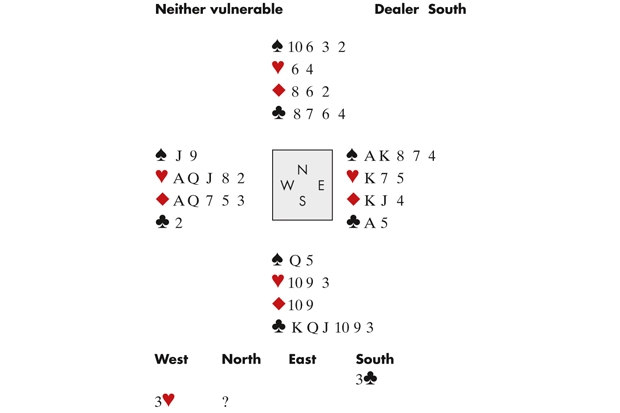What is the purpose of bidding? It’s how partners describe their hands to each other in order to reach the best contract. At least, that would be my answer — but I can already envisage the experts chuckling at my naivety. As any pro knows, describing your hand is just part of the story: almost as important is the ability to misdescribe it. When your side has been dealt poor cards, often the best course of action is to sabotage your opponents’ attempt to communicate. Bidding becomes a tool with which to fool, bully, confuse or harass them — and that’s all part of the beauty of the game.
During the open European championships in Ostend, I felt very privileged to have been conned by the Swedish star Peter Fredin: he opened a strong no trump without a point in his hand, making it all but impossible for my partner and me to bid our slam.
But I recently heard about an even bolder ‘psyche’ — one so imaginative that even Zia Mahmood, the acknowledged master of the bamboozling bid, was bowled over. It occurred during the Cavendish Teams:
South opens 3♣. West bids 3♥. You are North: what do you bid? Your partner has pre-empted; you are staring at a Yarborough. Clearly, the opposition have a slam on. You need to obstruct them as much as possible — but how? Maybe you should bid 5♣ or 6♣. Or what about introducing a new suit? Dangerous — but you hardly care about going for a big penalty. The Polish international Bartek Chmurski did none of these things: instead …he made a penalty double! The opposition passed it out, and, on making all 13 tricks, scored +930 instead of the +1510 they’d have chalked up on bidding 7♥ (or +1010 for bidding 6♥). Dazzling.






Comments